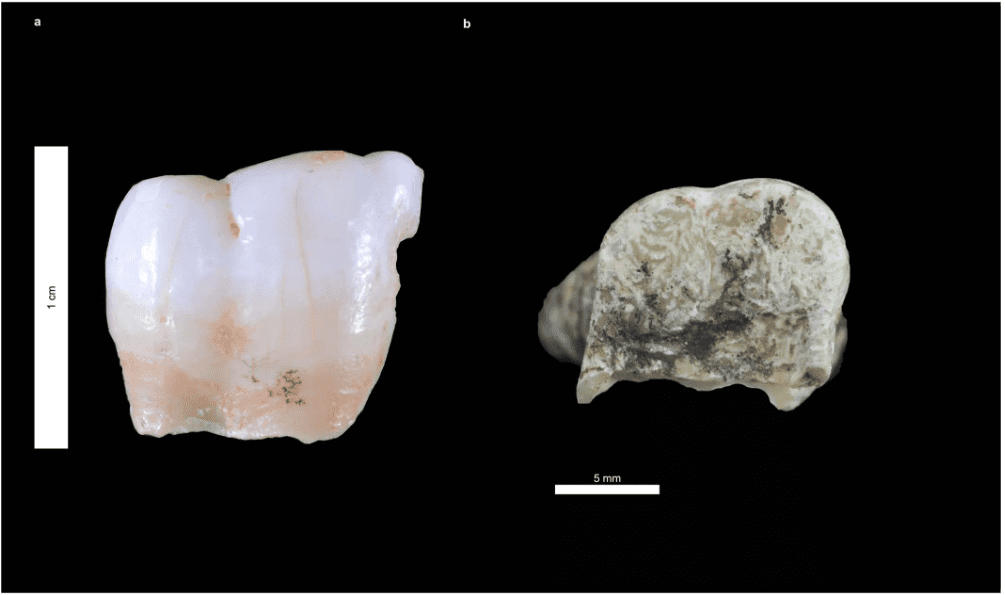Researchers at the University of Copenhagen have successfully isolated the oldest human genetic material to date, from an 800,000-year-old human fossil.

Image credits Frido Welker et al., (2020), Nature.
The study gives us insight into humanity’s past going back much farther than previously considered possible. It could also help us get a better understanding of the different (now extinct) branches in the human family and how they related to one another, the team adds.
Old relatives
“Ancient protein analysis provides evidence for a close relationship between Homo antecessor, us (Homo sapiens), Neanderthals, and Denisovans. Our results support the idea that Homo antecessor was a sister group to the group containing Homo sapiens, Neanderthals, and Denisovans,” says Frido Welker, Postdoctoral Research Fellow at the Globe Institute, University of Copenhagen, and first author on the paper.
The ancient DNA was harvested from an 800,000-year-old tooth belonging to the species Homo antecessor. It was discovered by palaeoanthropologist José María Bermúdez de Castro and his team in 1994 at the Gran Dolina cave site, Spain, a part of the larger Sierra de Atapuerca archeological site.
Through the use of a technique called mass spectrometry, the team was able to isolate proteins from the enamel of the tooth, allowing them to sequence its genetic information and discover where this species fits in the human family tree.
We know that humans and chimpanzees split, genetically speaking, about 9-7 million years ago, but we don’t have a very clear picture of how many different human species there were at the time and how they related to one another. The fact that all these other human lineages are now extinct doesn’t help either, nor does the fact that genetic material tends to break down over time. Much of what we know on the topic so far is based on DNA analysis of samples no older than around 400,000 years, or direct observations of the shape and structure of early human fossils.
“Now, the analysis of ancient proteins with mass spectrometry, an approach commonly known as palaeoproteomics, allow us to overcome these limits,” says says Enrico Cappellini, Associate Professor at the Globe Institute, University of Copenhagen and leading author on the paper.
The findings suggest that Homo antecessor isn’t, in fact, the last common ancestor for us and the Neanderthals, but rather a closely related relative of that ancestor.
“I am happy that the protein study provides evidence that the Homo antecessor species may be closely related to the last common ancestor of Homo sapiens, Neanderthals, and Denisovans. The features shared by Homo antecessor with these hominins clearly appeared much earlier than previously thought. Homo antecessor would therefore be a basal species of the emerging humanity formed by Neanderthals, Denisovans, and modern humans,” says José María Bermúdez de Castro, Scientific Co-director of the excavations in Atapuerca and co-corresponding author on the paper.
The current research was only made possible by a ten-year-long collaboration between experts in fields ranging from paleoanthropology to biochemistry, proteomics, and population genomics, which allowed the team to retrieve and read proteins of such incredibly old age.
The paper “The dental proteome of Homo antecessor” has been published in the journal Nature.






